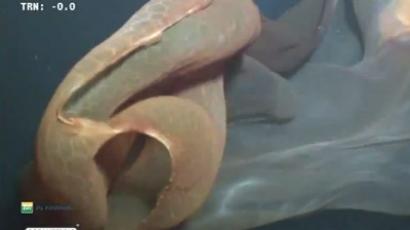Scientists create first-ever virtual germ

A group from Stanford University in the US has created the first computer simulation that mimics the work of an entire living organism – a primitive parasitic bacterium with a tiny genome. Yet the simulation required the power of 128 computers.
By making virtual versions of bacteria, scientists may be able to observe how they behave in certain real-life conditions. This would enable them to come up with more efficient therapies without having to invest too much time and money in laboratory experiments. Computer models are also safer when it comes to dealing with pathogens.Mycoplasma genitalium is a widespread human pathogen responsible for some urethral and vaginal infections. It also appears to be a perfect model organism for various research implications due to its simple organization. It has one of the smallest known genomes of all living organisms, with a single chromosome containing only 525 genes. By contrast, E. coli – another common bacterium used in laboratory experiments – has 4,288 genes in its DNA.No wonder that Markus Covert, an assistant professor of bio-engineering, and his research group chose M. genitalium for their computer model. In order to simulate the work of all of its components and their interactions, including the “behavior” of all the 525 genes, the scientists had to bring together various data from over 900 publications. Eventually, they were able to define 28 cellular processes and include each of them in the simulation as a separate submodel – a block of the resulting software.“These modules then communicated with each other after every step, making for a unified whole that closely matched M. genitalium's real-world behaviors,” the team explains in the top-rated scientific journal Cell.Creating a working model involves an immense amount of work. But so does its further testing. The team has validated the “virtual germ” against a broad range of data, performing their simulations in multiple repetitions. Some of them included independent runs on a cluster of 128 computers, or “in silico cells” – each representing a virtual “bacterial cell.”The results of this enormous work provide insights into many previously unobserved cellular behaviors. James Anderson, a program director the US National Institutes of Health, an organization which funded the work, described the model as a major step towards finding “new approaches for the diagnosis and treatment of disease.”The work was also widely praised as a giant step toward developing computer-based laboratories that could carry out countless experiments much faster than would be possible in any “wet lab.”













